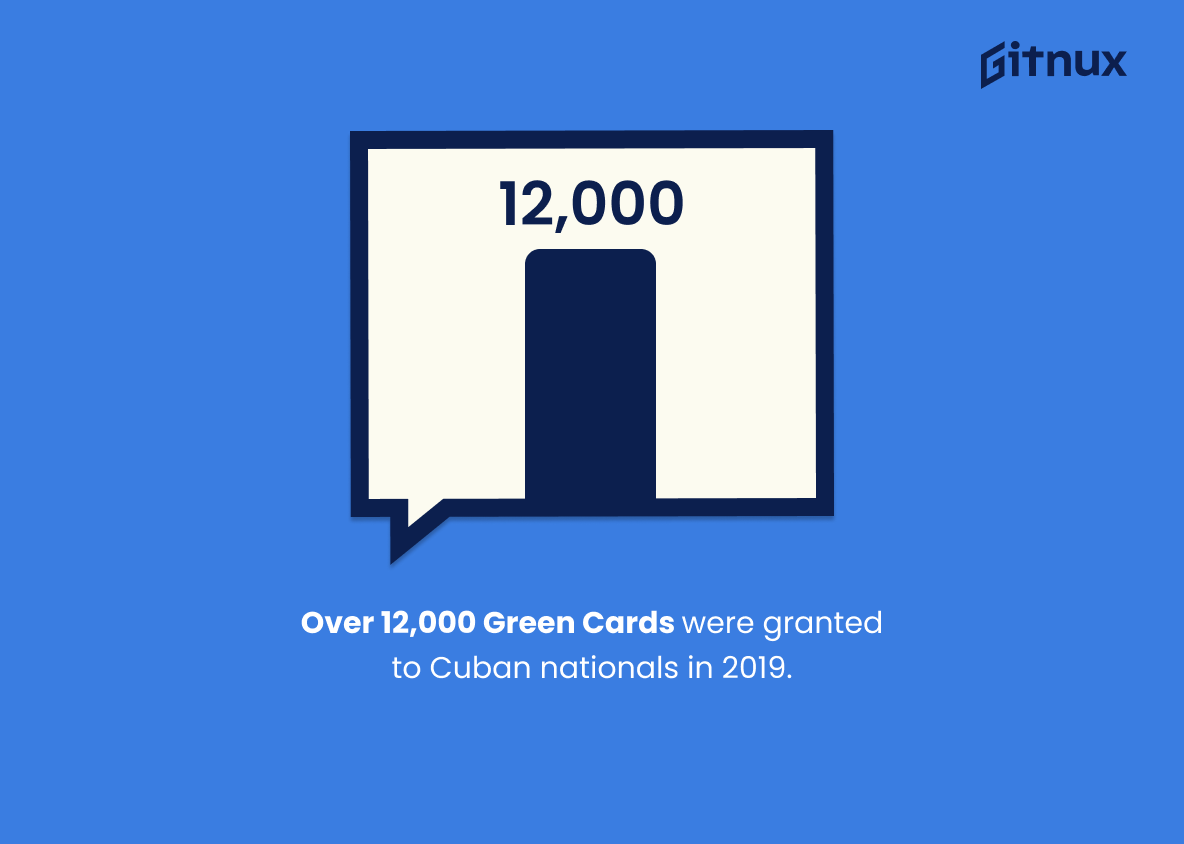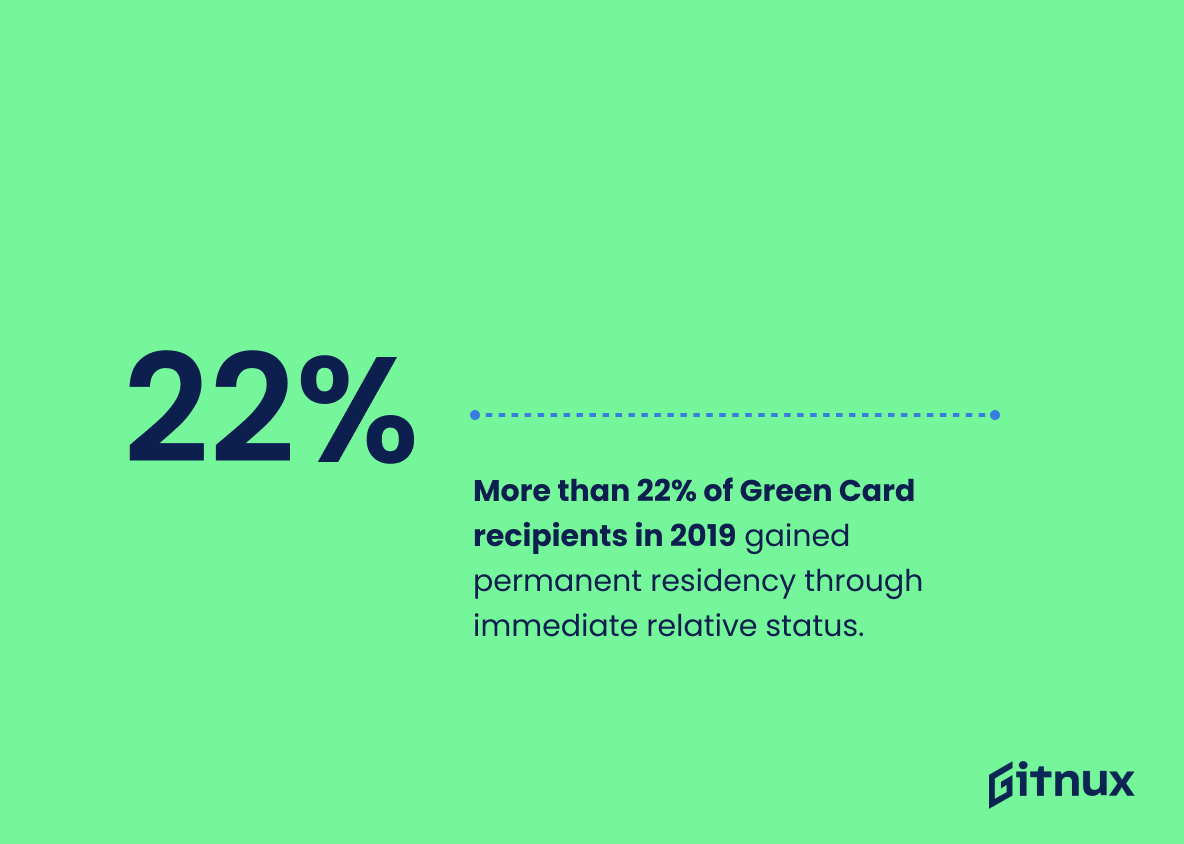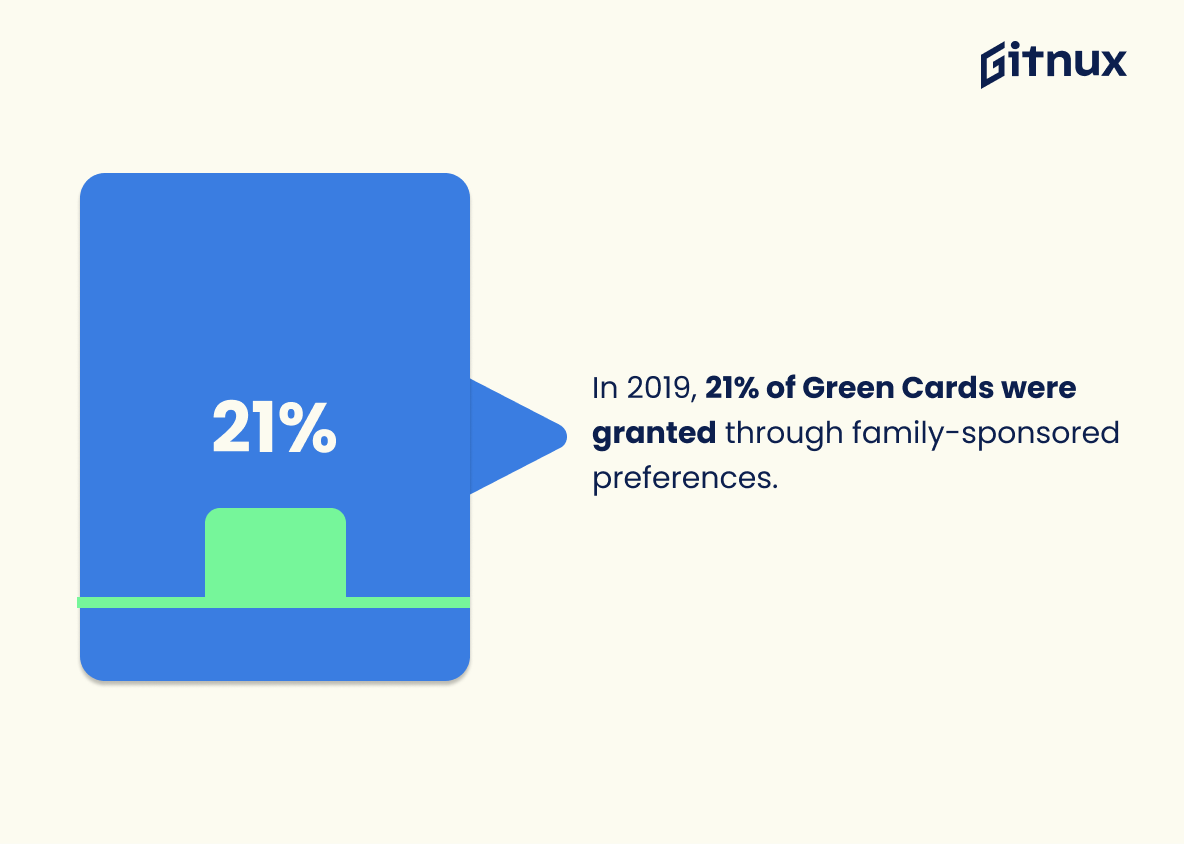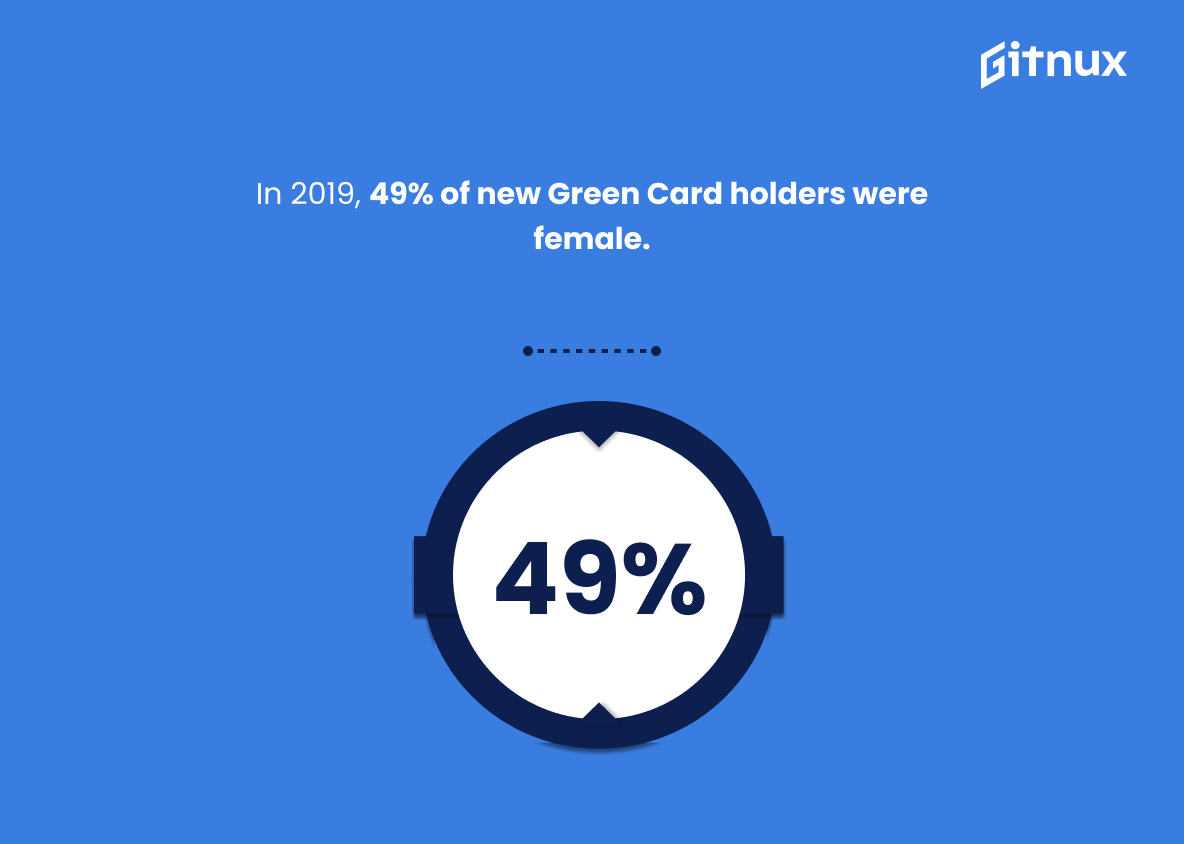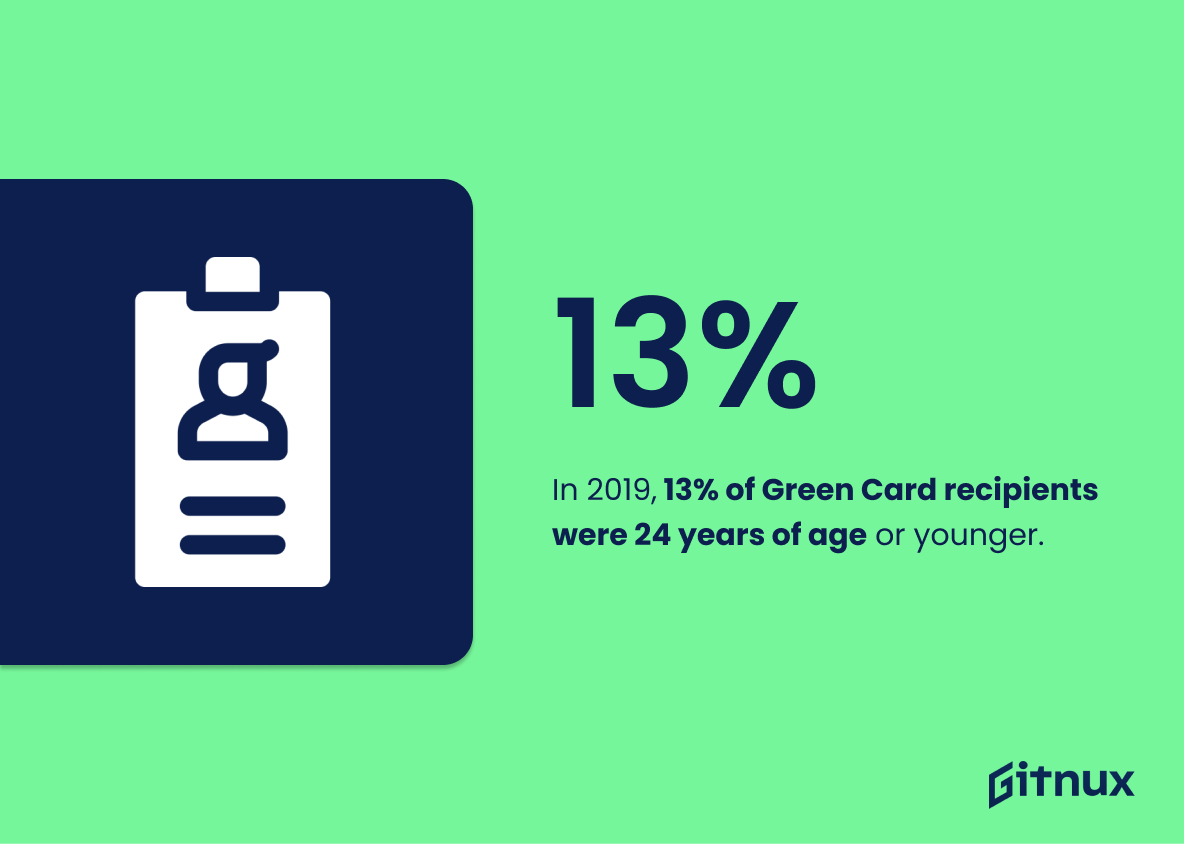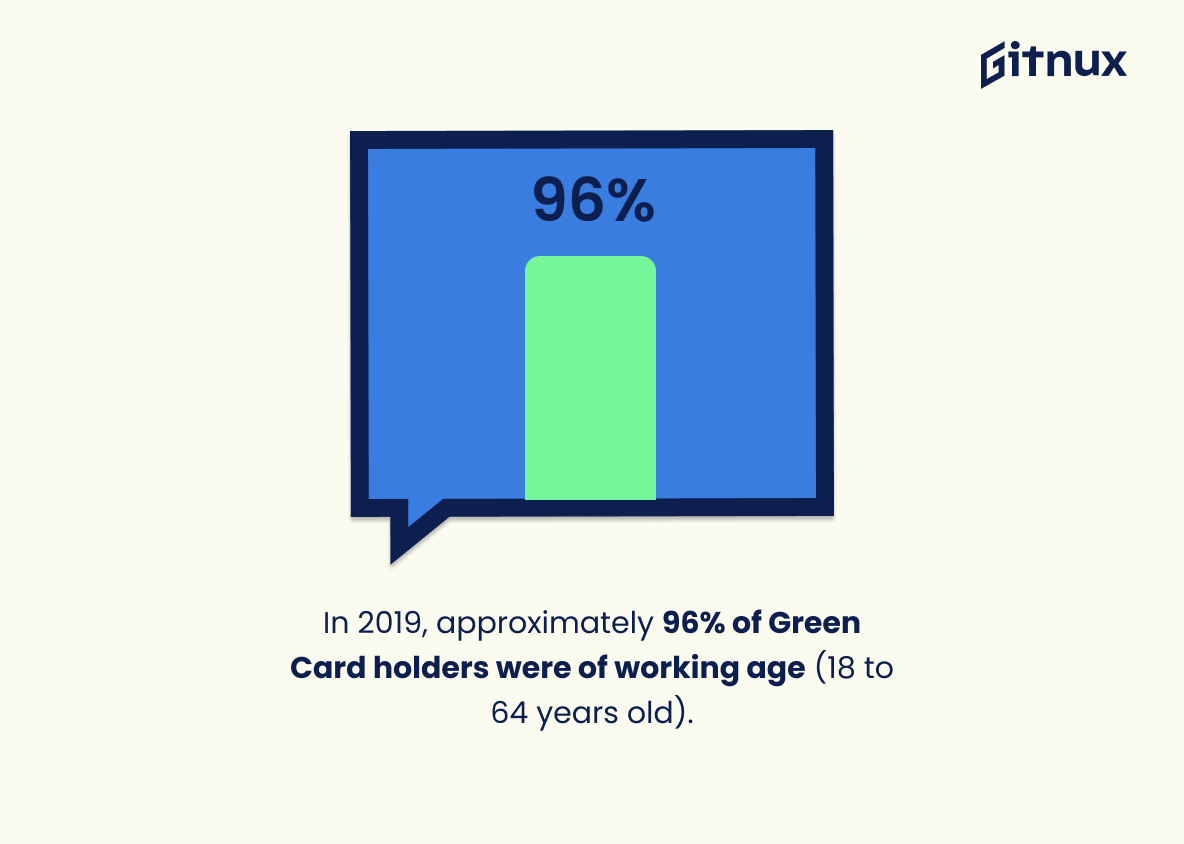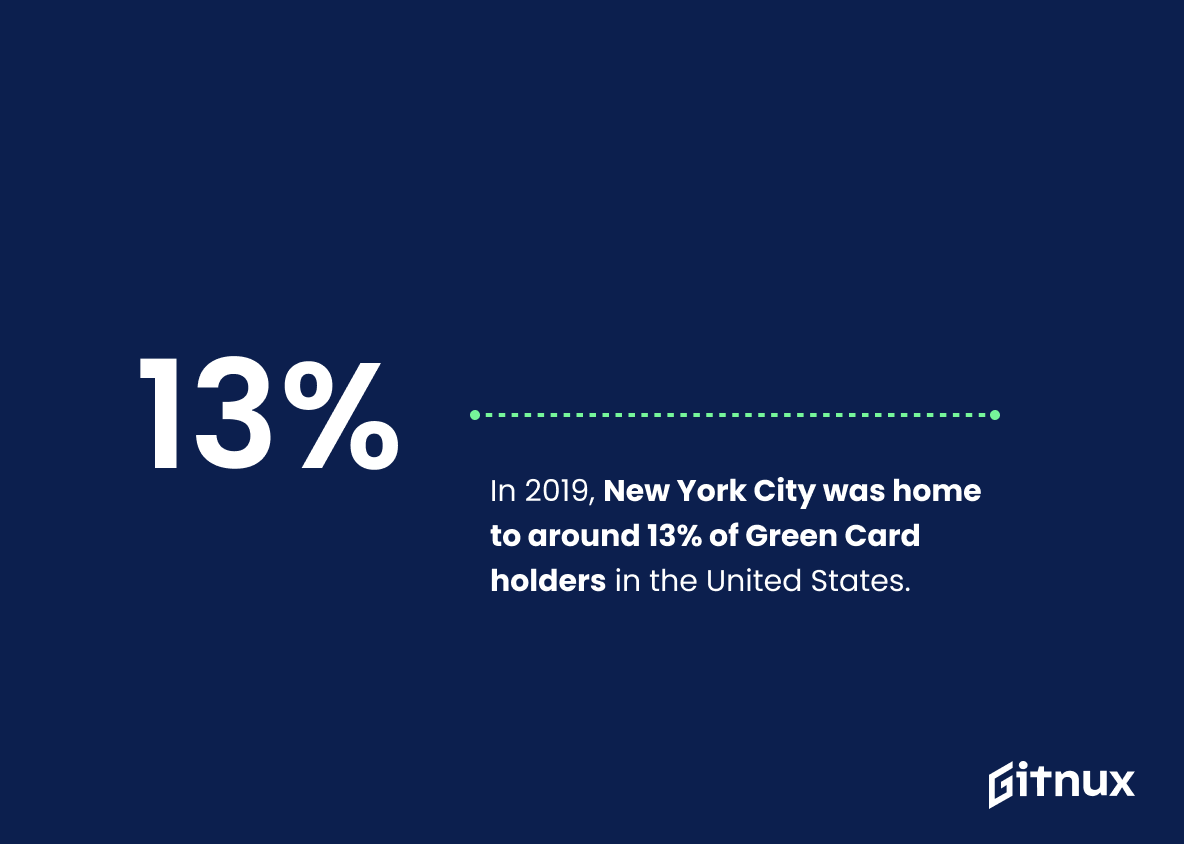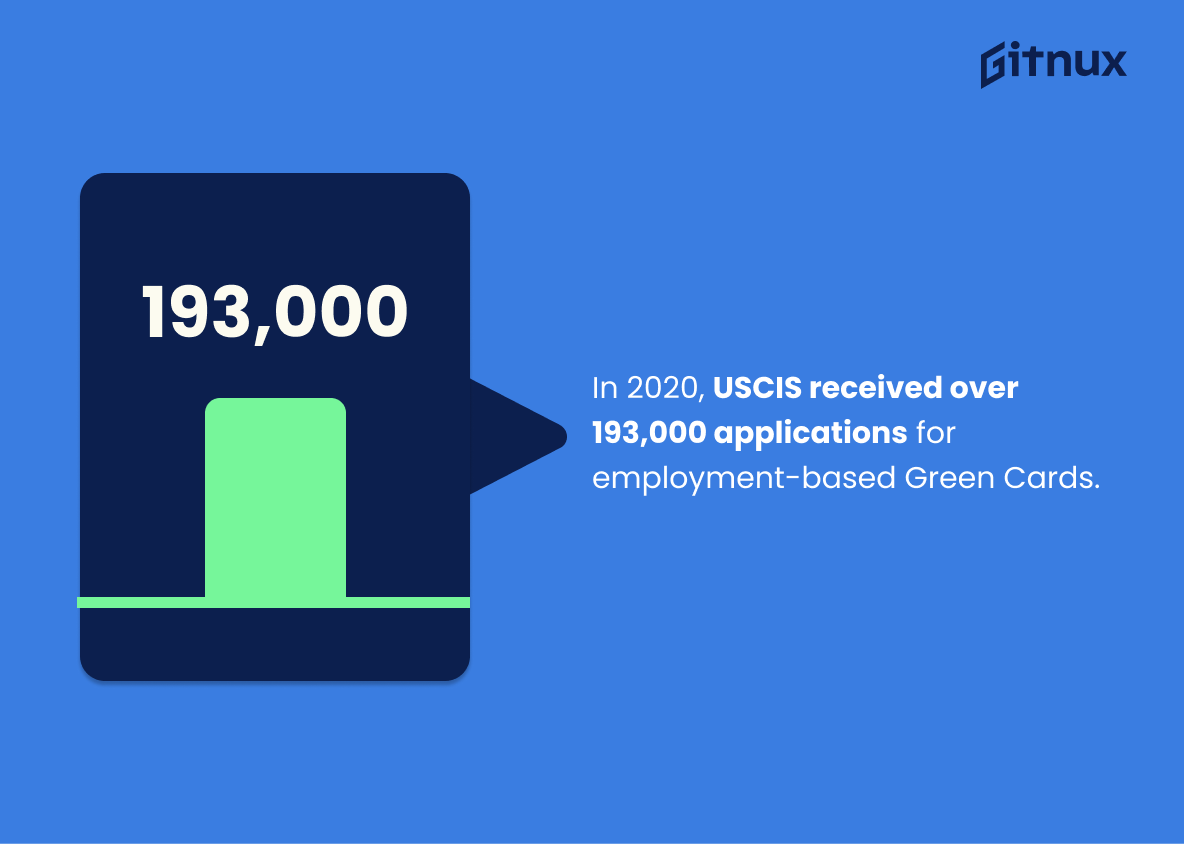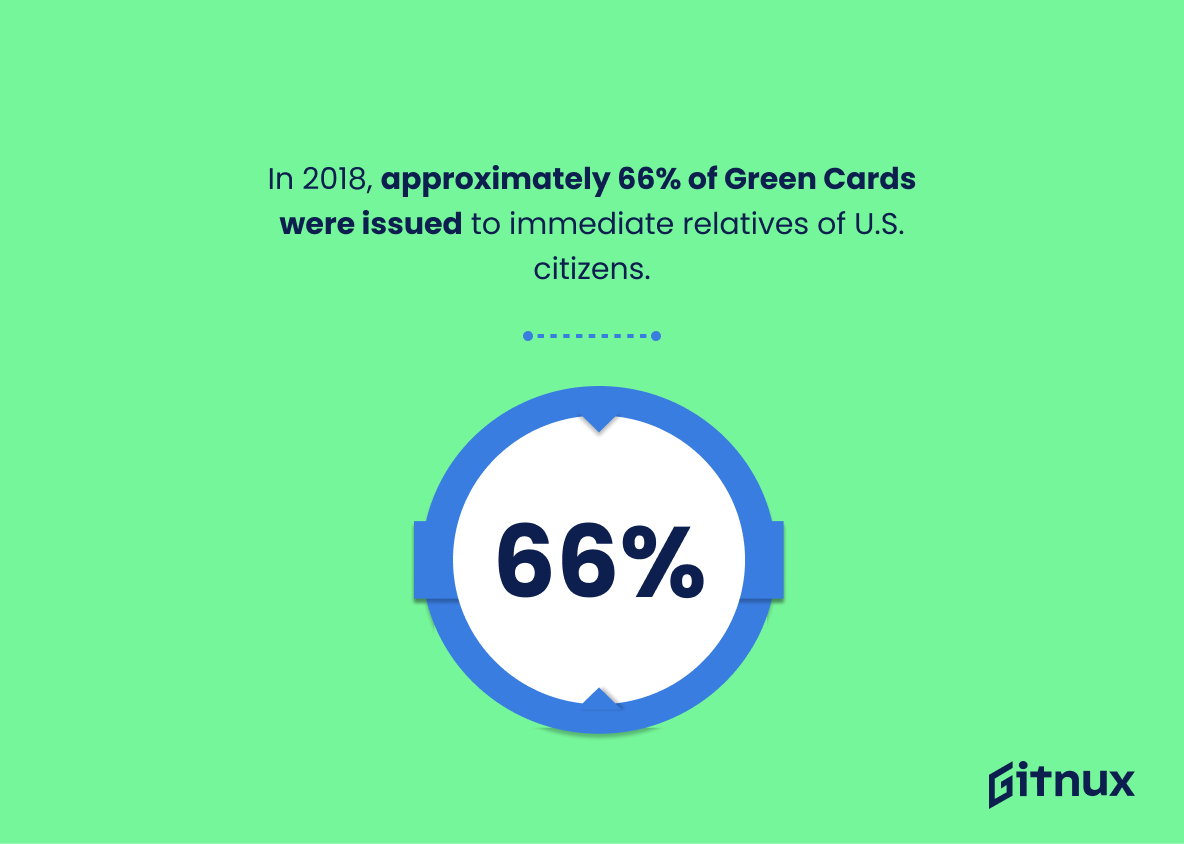The U.S. Green Card program is an important part of the country’s immigration system, allowing foreign nationals to become permanent residents and eventually citizens of the United States. Every year, millions of people receive a Green Card through various pathways such as family-sponsored preferences, employment-based categories or immediate relative status. In this blog post we will explore some interesting statistics about who receives these cards and from where they come from in order to gain a better understanding of how our nation’s immigration policies are impacting those seeking legal residency in America today.
This statistic is a powerful reminder of the sheer number of people who are granted a Green Card each year. It highlights the importance of the Green Card program and the impact it has on the lives of so many individuals. It also serves as a reminder of the potential for growth and opportunity that the Green Card program provides.
In 2019, approximately 54% of new Green Card holders already resided in the United States.
This statistic is a telling indication of the importance of the Green Card program in the United States. It shows that the majority of new Green Card holders were already living in the country, suggesting that the program is providing a pathway to permanent residency for those already living and working in the US. This highlights the significance of the Green Card program in providing stability and security to those who have already established themselves in the US.
Green Card Statistics Overview
In 2019, 44% of Green Card recipients came from Asia, followed by 39% from North America.
This statistic is a telling indication of the current state of Green Card recipients. It reveals that the majority of Green Card recipients are coming from Asia, with North America coming in second. This highlights the importance of understanding the global trends in immigration and the impact it has on the United States.
In 2019, 14% of new Green Card holders came from the European region.
This statistic is significant in the context of Green Card Statistics because it highlights the fact that a significant portion of new Green Card holders are coming from the European region. This indicates that the United States is welcoming immigrants from Europe, which is an important factor in understanding the current immigration landscape.
In 2019, the top Green Card country of origin was Mexico, at over 15% of total recipients.
This statistic is a telling indication of the importance of Mexico in the Green Card landscape. It highlights the fact that Mexico is a major source of Green Card recipients, accounting for a significant portion of the total number of recipients. This is an important point to consider when discussing Green Card Statistics, as it provides insight into the countries that are most heavily represented in the Green Card program.
Over 12,000 Green Cards were granted to Cuban nationals in 2019.
This statistic is a testament to the fact that Cuban nationals are actively taking advantage of the Green Card program. It shows that the program is providing a viable pathway for Cuban nationals to gain permanent residency in the United States. This is an important statistic to consider when discussing Green Card Statistics, as it demonstrates the success of the program in helping Cuban nationals achieve their goals.
More than 22% of Green Card recipients in 2019 gained permanent residency through immediate relative status.
This statistic is significant in the context of Green Card Statistics because it highlights the importance of immediate relative status in the process of obtaining permanent residency. It demonstrates that a significant portion of Green Card recipients in 2019 were able to gain permanent residency through this route, indicating that it is a viable option for those seeking to become permanent residents.
In 2019, 21% of Green Cards were granted through family-sponsored preferences.
This statistic is a telling indication of the importance of family-sponsored preferences when it comes to Green Card applications. It shows that a significant portion of Green Card recipients are being granted based on family ties, highlighting the importance of family connections in the immigration process.
In fiscal year 2018, 9.7% of Employment Green Cards were issued to Chinese nationals.
This statistic is significant in the context of Green Card Statistics because it reveals the extent to which Chinese nationals are benefiting from the Employment Green Card program. It shows that Chinese nationals are making up a significant portion of the recipients of Employment Green Cards, indicating that the program is providing a meaningful opportunity for Chinese nationals to gain permanent residency in the United States.
In fiscal year 2018, 10.9% of Green Cards issued through the diversity lottery category were granted to African immigrants.
This statistic is a telling indication of the impact of the diversity lottery category on African immigrants. It demonstrates that the lottery system is providing a viable pathway for African immigrants to gain permanent residency in the United States. This is an important point to consider when discussing Green Card Statistics, as it highlights the importance of the lottery system in providing opportunities for immigrants from all backgrounds.
In 2019, the U.S. government received over 14 million applications for the Diversity Visa program.
This statistic is a testament to the immense interest in the Diversity Visa program, which is a key pathway to obtaining a Green Card. It highlights the sheer number of people who are eager to gain permanent residency in the United States and become part of the American dream. This statistic is a powerful reminder of the importance of the Diversity Visa program and the impact it has on the lives of millions of people.
As of March 2018, there were 2.148 million approved Green Card applications in the backlog.
This statistic is a stark reminder of the immense backlog of Green Card applications that have yet to be processed. It serves as a testament to the sheer number of people who are waiting to gain permanent residency in the United States. It is a reminder of the need for a more efficient and streamlined system to process these applications in a timely manner.
In 2019, 30% of Green Card holders had a bachelor’s degree or higher.
This statistic is a telling indication of the educational level of Green Card holders. It shows that a significant portion of Green Card holders have achieved a bachelor’s degree or higher, demonstrating the value of the Green Card program in providing access to higher education and the potential for upward mobility.
In 2019, 49% of new Green Card holders were female.
This statistic is significant in the context of Green Card Statistics because it demonstrates the progress that has been made in terms of gender equality in the immigration process. It shows that women are increasingly being granted Green Cards, which is a positive sign for the future of gender equality in the United States.
In 2019, 13% of Green Card recipients were 24 years of age or younger.
This statistic is significant in the context of Green Card Statistics because it highlights the fact that a significant portion of Green Card recipients are young people. This indicates that the Green Card program is providing opportunities for young people to pursue their dreams and build a better life for themselves. It also shows that the program is helping to create a more diverse and vibrant population in the United States.
In 2019, approximately 96% of Green Card holders were of working age (18 to 64 years old).
This statistic is significant in the context of Green Card Statistics because it highlights the fact that the majority of Green Card holders are of working age, indicating that they are likely to be contributing to the economy and workforce. This is an important factor to consider when discussing the impact of Green Card holders on the US economy.
In 2019, New York City was home to around 13% of Green Card holders in the United States.
This statistic is a powerful reminder of the importance of New York City in the Green Card landscape. It highlights the city’s role as a hub for immigrants, and the impact that Green Card holders have on the city’s economy and culture. It also serves as a reminder of the importance of immigration in the United States, and the need for policies that support and protect immigrants.
In 2020, USCIS received over 193,000 applications for employment-based Green Cards.
This statistic is a testament to the immense demand for employment-based Green Cards in 2020. It highlights the fact that many individuals are eager to gain permanent residency in the United States and take advantage of the opportunities that come with it. This statistic is an important indicator of the current state of the Green Card system and provides valuable insight into the future of immigration in the United States.
In 2018, approximately 66% of Green Cards were issued to immediate relatives of U.S. citizens.
This statistic is a telling indication of the importance of family ties in the Green Card process. It highlights the fact that the majority of Green Cards are issued to those with close family connections to U.S. citizens, emphasizing the importance of family in the immigration process.
Conclusion
The statistics presented in this blog post demonstrate the diversity of Green Card recipients and their countries of origin. Approximately 1 million people receive a Green Card every year, with 54% already residing in the United States. In 2019, 44% came from Asia while 39% were from North America and 14% were from Europe. Mexico was the top country of origin at 15%, followed by Cuba at 12%. Over 22% gained permanent residency through immediate relative status, 21% through family-sponsored preferences, 9.7 % through employment green cards for Chinese nationals and 10.9 % for African immigrants via Diversity Visa program which received over 14 million applications that same year. As of March 2018 there were 2148 approved backlogged applications waiting to be processed; 30 percent had bachelor’s degrees or higher; 49 percent female; 13 percent 24 years old or younger; 96 percent working age (18 – 64); 66 percent issued to immediate relatives of U.S citizens and 193 thousand applied for Employment based green card in 2020 alone according to USCIS records . New York City is home to around 13 %of all US Green Card holders as well as other cities across the nation making it clear that immigration plays an important role within our society today
References
0. – https://www.cis.org
1. – https://www.travel.state.gov
2. – https://www.migrationpolicy.org
3. – https://www.uscis.gov
4. – https://www.travel.state.gov
5. – https://www.dhs.gov

